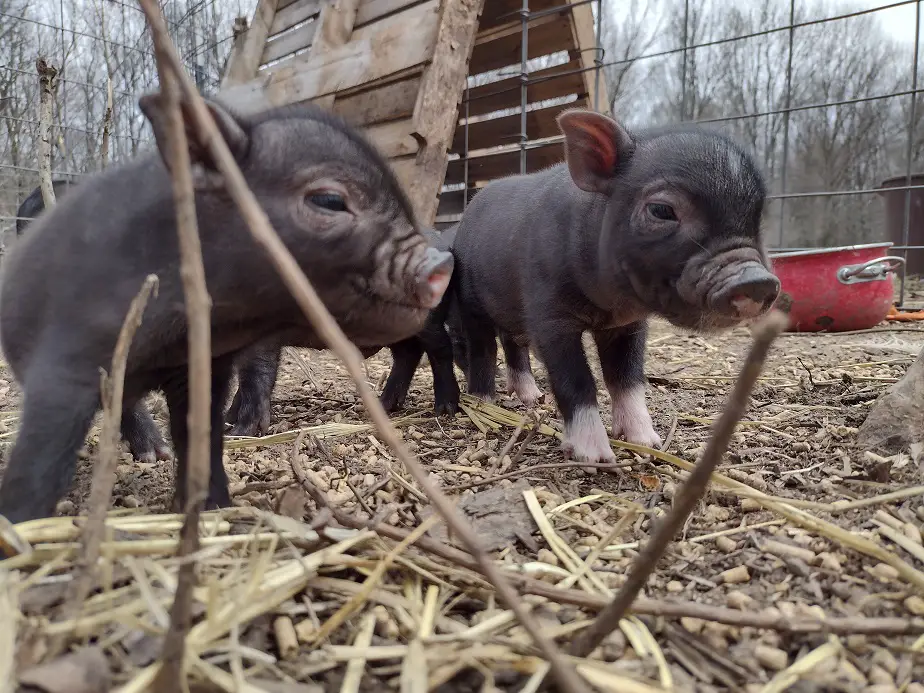Over the last 6 years, I’ve really started liking pigs. This year we had two litters, and are planning on four litters next year.
Piglets are usually born around March but can be born anytime. Most people want pigs ready for butcher in September or October so they should be born six to seven months earlier. Piglets born in the cold winter need extra care to keep warm, but a good sow with a windbreak and dry straw will handle it.
Caring for Piglets
Caring for piglets can be tedious, especially if you are doing it without a sow. When you buy an unweaned piglet, you become its mother and are responsible for monitoring and providing for it 24/7. A weaned piglet, called a feeder pig, is easy to handle and has fewer concerns, but costs twice as much.
My friend Gerald has bought unweaned pigs and had good results with them, plus he saved $50 each upfront by buying them young. The only thing to realize is that unweaned pigs (usually 2-4 weeks old) don’t take care of themselves at all.
Caring for little ones like that, you have to take extra care to keep them warm, dry, fed, and corralled. Thinking back to our first sow, I was amazed at how she spent her time after birthing.
Once she got her strength back (by the time the piglets started crawling out of the nest) most of her time was spent rounding up the piglets that wandered too far out and got cold. If you are taking care of a little one without a sow, that’s become your responsibility.
Piglets need to be either watched constantly or kept contained in a safe, warm, dry area. even then, they need to be looked on five or more times a day just to be sure everything is alright. Problems happen quickly. A pig can get stuck in a weird place, the heater can go out or overheat; stuff happens.
Unweaned piglets need a warm spot, even if they don’t use it all the time. They will wander around, but if it’s cold out, they need a place to warm up. Apart from a mother, this is usually done with a heat lamp or two. Other than heat, if needed, keep them dry and sheltered from wind and rain.

Setting up For Farrowing (birthing)
Farrowing is probably the simplest part of raising pigs. It should be pretty much hands-off. When I know piglets are due, I usually just end up suddenly seeing a nest full of little wiggly piggies. A good sow will do all the work, if you give her what she needs.
For farrowing, a sow needs a clean, dry, sheltered space. I can be as simple as an A-frame full of fresh straw. She’ll love it. usually, sows start nesting up to two weeks before farrowing and really build the nest up a few days before.
My farrowing shelter is literally just two pallets with a tarp nailed on for waterproofing. Pile it with half a bale of straw and it’s good to go rain or shine. As logs as the mother is healthy, has a decent player of ft on her, and they are all dry, I wouldn’t expect an issue unless the temperature is zero F or below.
Be sure that she has enough fresh water, and if it’s cold, consider giving her warm water so she drinks enough
Checking Piglets After Birth
Piglets are usually fine after birth, but sometimes they are accidentally injured by the sow. This is less common within breeds that have more instinctive mothers, but it can happen anytime. While the sow is still in labor, I can get in the nest and check the newborn piglets. Once she’s done, she’s more protective.
Let me say this now, It’s best to leave the sow alone during labor and shortly after.
If you are trying to watch or help the process, you are bothering the sow. Other pig farmers agree with the fact that being too involved is worse than leaving them alone completely. If you give the sow her space, her mothering instincts kick in better. Let nature do its thing. It seldom messes up.
The most common piglet injury is being stepped on and that’s greatly increased by bothering the sow. Usually, she will just lay there and the piglets, hardly able to crawl, will slowly move to her side. If you disturb her, she may try and roll or get u quickly. That’s how piglets get hurt.
That tends to rip a chunk of skin loose. If it’s not mostly gone, it will usually reattach. An aerosol product called Blu-Kote is the preferred choice to clean such wounds. Gauze wrapping will hold skin in place for it to heal. It usually heals up very well. Liquid bandage spray can be used to seal it up if skin is missing.
Nothing wrong with trying to do a head count the next day, but don’t get so close so as to disturb the sow. You’ll know if she’s getting grumpy. That’s your cue to beat it.
The other main thing you want to check for is dead piglets. Whether from stillbirth or injury, some do die. They will often get pushed deeper into the nest, and that makes a mess pretty soon. So, be sure to thoroughly go through the nest as soon as you are allowed. And, do make sure it’s staying dry.
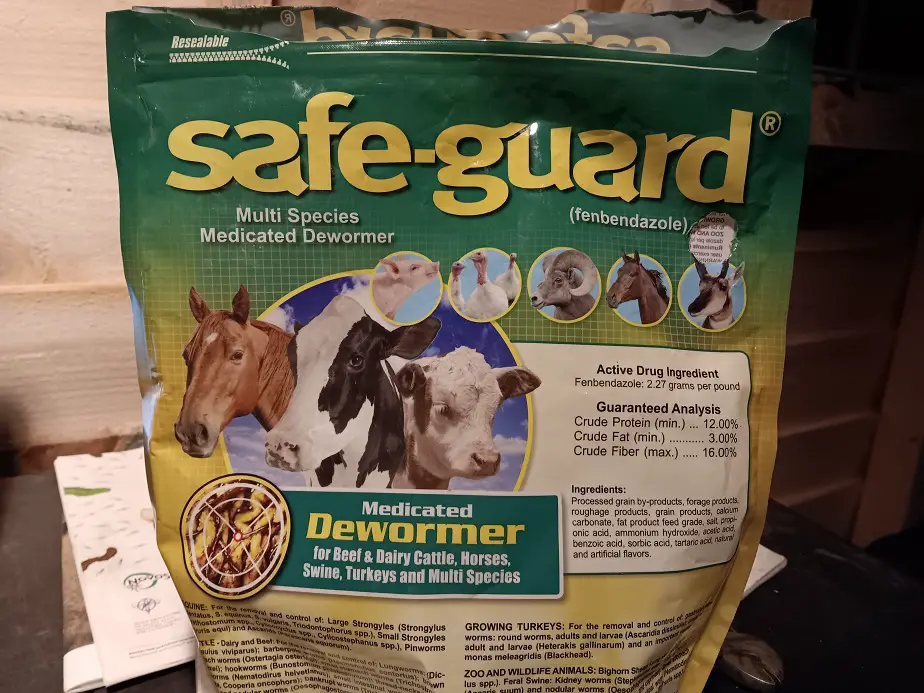
One thing you need for pigs, no matter your raising system, is a parasitic worm treatment. The best swine dewormer is Fenbendazole. It’s known by the brand name Safeguard. Safeguard is available as a medicated corn/alfalfa pellet. It’s the only way I can worm my pigs since they won’t stand still for an injection of Ivermectin. It’s easy and cheap.
- There is a stronger pellet for swine only. Here it is on Amazon
- There is a weaker pellet for general barnyard livestock, including swine. Here it is on Amazon.
I use the multi-species version because it’s what’s available in my local store and I can use it for my chickens too. It’s the most effective swine wormer and the easiest to administer. I use it on all weaned piglets and adults twice a year. Don’t go without it.
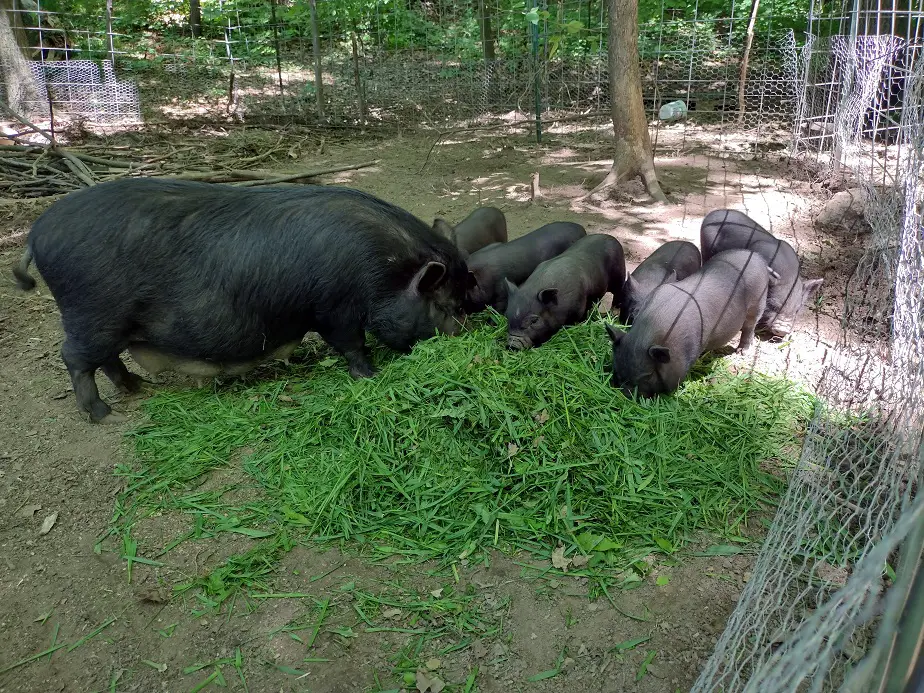
Weaning and Feeding Piglets
Piglets should be weaned between 4 and 8 weeks. That’s when they start nibbling on dry feed and rely less on nursing. Piglets should not be separated from the mother for at least 2 days, but nursing for 4 weeks is much better for them.
Unweaned pigs separated from their mothers are fed with a combination of weaner pig feed and milk products. Piglets under 14 days are usually exclusively bottle-fed a basic milk replacer, and dry feed is introduced at about that time.
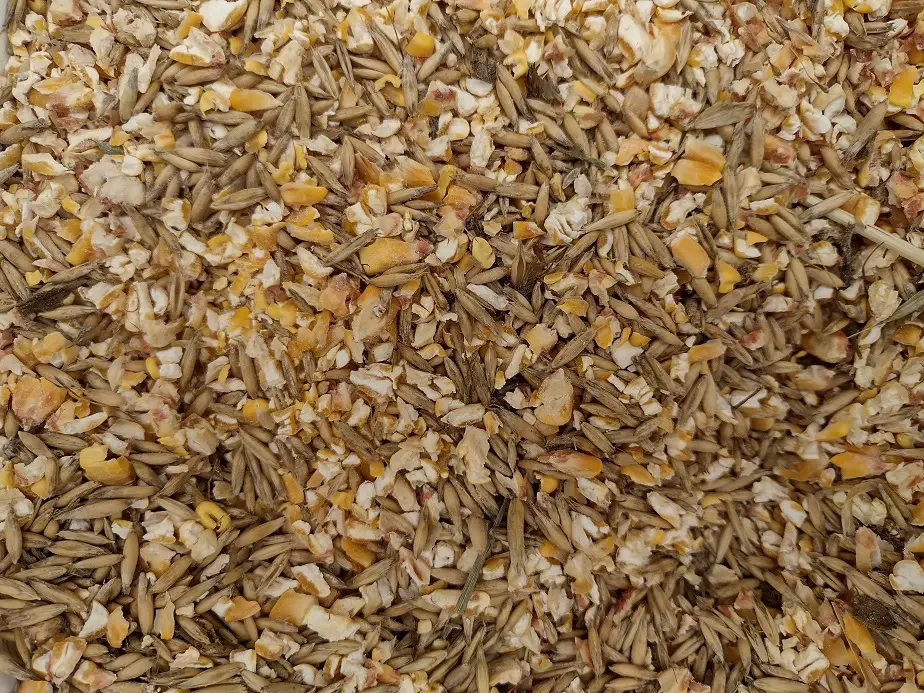
Over the next 2 weeks, the milk replacer is reduced, and the weaner feed is increased until their diet is just weaner feed. By 4 or 5 weeks, you can start easing them onto a grower pig feed with 16 percent protein and by 8 weeks, piglets can remain on just the grower ration.
Weaner feed is a similar mix to regular pig feed but has a milk product, or milk replacer added to it. It eases the new piggy into a diet of grain-based dry feed. If you just switched right from milk to grains, the animal won’t handle it too well. Little pigs’ digestion systems have to develop and this helps it happen.
Letting pigs nurse from their mother helps seems to help them handle weaning without a weaner feed. I let the mother do her thing and only use a grower pig feed period. It seems to be working fine.
A weaner feed is usually around 18 to 20 percent protein because they’re growing quite fast and their digestion isn’t quite operating at peak efficiency yet. After 4 weeks old, their digestion is about ready to handle the grain and soy-based feed that’s common today.
I like to offer dry feed as soon as the piglets are interested, but don’t rely on it as the sole feed until eight to ten weeks. Even then, if kept with the mother, piglets will often attempt to nurse for a month or so. If need be, I can wean piglets at 4 weeks old without much issue.
But, they seem stronger when weaned a bit older. If you keep piglets with the mother, yo can skip the weaner feed and just allow them to wean themselves directly onto a feeder pig ration.
You can figure about one pound of dry feed per day for each month of age. So, expect to use about 30 pounds of feed between 4 and 8 weeks. If you are going to use weaner feed, I’d get 100 pounds per 3 piglets and see how that goes.
After that stage, Grower feed is used (16 percent protein). Some people feed a 14 percent protein feed (heavy on the grain) for the last month or two to add extra fat.
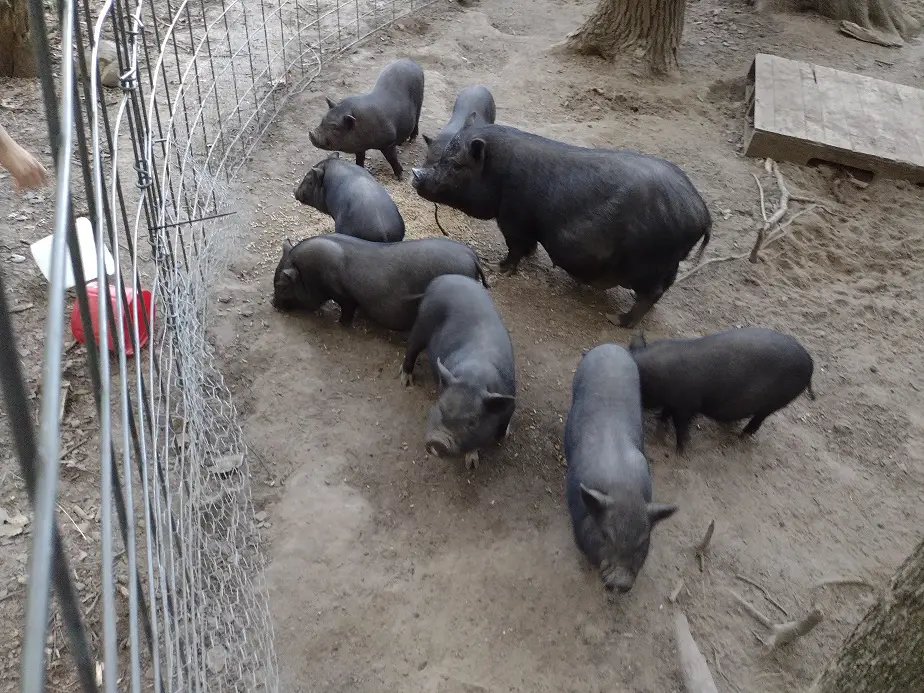
When can Piglets be Sold?
Piglets can be sold any time after 2 days old, but are best sold between 8 and 10 weeks. At that age, You know the pig has been fully weaned and is much less likely to succumb to sudden problems. A two-month-old pig can handle a lot more than a one-month-old pig.
How Long from Weaning to Butcher?
Home-raised pigs are usually butchered 5-6 months after weaning. Commercial pigs are weaned early and butchered 5 months later, but heritage pigs are often butchered 7-8 months after weaning. As pigs get larger, they become less efficient with feed but gain more flavor.
Pigs raised on pure pasture often have to go 16 to 20 months before they’re a respectable body size for butchering. The only difference is the low-protein, low-calorie diet of most pastures. If you planted a pasture of corn, clover, and millet or rapeseed, you could expect more standard gains on a pastured pig.
Related Articles:

